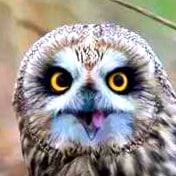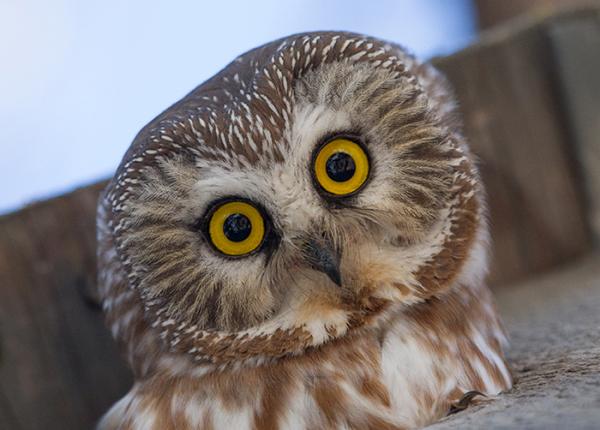From Owl and Raptor Center Haringsee
Do you know the largest native (German) owl species? It’s the beautiful eagle owl. The eagle owl has a pair of striking, long, feathered ears, large orange-red eyes, and a characteristically thick head.
Eagle owls prefer richly structured, diverse landscapes where they can find good hunting grounds, suitable breeding sites, and daytime hides. They particularly like to fly to bodies of water to hunt, and they prefer covered areas on rock faces to breed, but can also feed their young in sand and clay pits, on the forest floor, or in tree nests.
The eagle owl’s menu is very varied: from shrews to foxes, from sparrows to female hawks and grey herons, it will also eat fish, large beetles, grasshoppers, earthworms, and snails. Especially in winter, it will also feast on carrion and meat scraps. It also builds up a reserve layer of blubber in the fall, which allows it to survive very long periods of hunger.
Original German
Kennt ihr die größte heimische Eulenart? Es ist der wunderschöne Uhu. Der Uhu besitzt ein Paar auffällige lange Federohren, große orangerote Augen und einen charakteristisch dicken Kopf. Uhus bevorzugen reich gegliederte, abwechslungsreiche Landschaften, in denen sie gute Jagdgebiete, geeignete Brutplätze sowie Tageseinstände finden. Zur Jagd fliegen sie besonders gerne an Gewässer, zur Brut bevorzugen sie überdachte Stellen in Felswänden, können jedoch auch in Sand- und Lehmgruben, am Waldboden oder in Baumhorsten ihre Jungen versorgen.
Die Speisekarte des Uhus ist sehr vielseitig: Von der Spitzmaus bis zum Fuchs, vom Sperling bis zum Habichtsweibchen oder Graureiher, aber auch Fischen, großen Käfern, Heuschrecken, Regenwürmern und Schnecken verschmäht er nichts. Besonders im Winter geht er auch an Aas und Fleischabfälle.
Außerdem legt er im Herbst eine Reserve-Speckschicht an, durch die er sehr lange Hungerperioden überstehen kann.


Thank you for the lovely picture. I hope I’ll get to get a glimpse of one of those before dying. They look huge, it must be awesome to see. Eagle owls exist here (France) too, but it’s not a species I have any chance to meet in the Parisian suburbs, ha ha.
By the way, in French it’s not called an “eagle” but a “great-duke” (grand-duc). And there’s also a “small-duke” (the scops owl, Otus scops, who’s really tiny) and a “medium-duke” (the long-eared owl, Asio otus).
If there is a zoo or aviary nearby with some, I highly recommend seeing these in person. I know in the US, one doesn’t usually have to go far to find an example of our Gran Duc Grand-duc d’Amérique.
I’m a bit familiar with the “duc” name scheme. Medium-Duke sounds kind of funny. 😄 I like the names, as they sound like forest royalty, and I feel they’d agree. I also like the ones that have names highlighting European animals they resemble, as then I get to learn about some other animals you have that we don’t. It’s a 2-for-1 learning opportunity!
Unfortunately for me, there’s none in the nearest zoos, which isn’t surprising since they’re mostly focused on “exotic” animals. I’ll probably have to wait a few years before I’m able to travel in another region to visit a zoo that has an eagle owl.
But while searching, I saw that the zoo near my summer workplace has snowy owls, maybe I’ll go take a look one of these days!
What?! That’s crazy! I would think everyone would want an Eagle Owl. Even if they’re a regular resident, it’s not like people get to regularly see them up close.
I saw my first Snowy this year. I wanted to see if it lived up to the hype from all the memes and such.
The one I saw exceeded expectations! He was totally charming and made many great faces. I think anyone who likes them in photos would love them in person. Very beautiful owls!